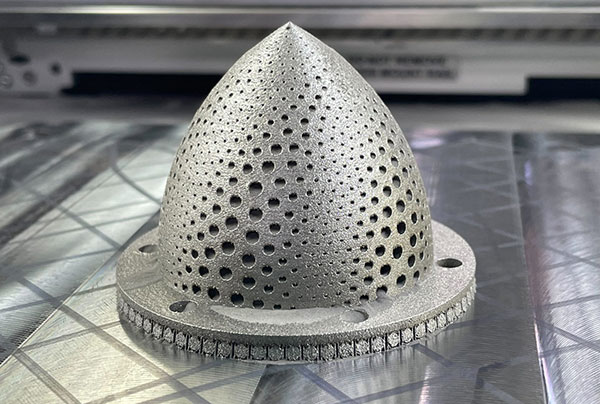
Designers who use Fusion for creating models for additive manufacturing can benefit from nTop’s implicit modeling capabilities. Image courtesy of Autodesk.
Latest News
November 13, 2023
nTop offers implicit modeling software that allows users to develop complex, high-performance parts and automate their processes.
Autodesk harnesses the power of implicit modeling within Autodesk Fusion with the introduction of volumetric lattice capabilities included with the Product Design Extension, the company says. Users can modify existing solid or mesh bodies to create complex volumetric lattices that alter the shape and appearance of a design.
nTop’s announcement regarding Implicit Interop initiative led Autodesk to integrate nTop’s technology into Fusion. This enables the two companies' shared users to work with both software platforms. This feature will allow for the transfer of designs between systems, with file sizes reduced from gigabytes to megabytes.
Designers who use Fusion for creating models for additive manufacturing can benefit from nTop’s implicit modeling capabilities. This helps to enhance their models for lightweighting, improved thermal management and the creation of complex architected materials, Autodesk reports.
The integration of nTop with Autodesk Fusion offers several advantages. nTop users will be able to transition their designs to Autodesk’s CAD/CAM tools using the nTop add-in for Fusion. This integration ensures that the design workflow remains uninterrupted.
The implicit import feature eliminates the need for large mesh files, making it easier to handle highly complex parts. By avoiding the meshing process, nTop users can export their implicit designs and import them directly into Fusion.
Autodesk Fusion offers build preparation capabilities tailored for additive manufacturing. These include; part orientation, packing, support generation, slicing, machine-specific build file generation and machine connectivity. By incorporating these features, customers can enhance their additive manufacturing processes.
The integration’s implicit import functionality is not limited to manufacturing preparations. It also offers a bridge to Fusion’s process simulation toolset. This allows for nTop users to access Fusion’s metal powder bed fusion process simulation capabilities to predict potential build failures and create compensated models.
Sources: Press materials received from the company and additional information gleaned from the company’s website.
More Autodesk Coverage
Subscribe to our FREE magazine, FREE email newsletters or both!
Latest News
About the Author
DE’s editors contribute news and new product announcements to Digital Engineering.
Press releases may be sent to them via DE-Editors@digitaleng.news.
Related Topics







